- Joined
- Oct 9, 2007
- Messages
- 47,511 (7.48/day)
- Location
- Hyderabad, India
| System Name | RBMK-1000 |
|---|---|
| Processor | AMD Ryzen 7 5700G |
| Motherboard | ASUS ROG Strix B450-E Gaming |
| Cooling | DeepCool Gammax L240 V2 |
| Memory | 2x 8GB G.Skill Sniper X |
| Video Card(s) | Palit GeForce RTX 2080 SUPER GameRock |
| Storage | Western Digital Black NVMe 512GB |
| Display(s) | BenQ 1440p 60 Hz 27-inch |
| Case | Corsair Carbide 100R |
| Audio Device(s) | ASUS SupremeFX S1220A |
| Power Supply | Cooler Master MWE Gold 650W |
| Mouse | ASUS ROG Strix Impact |
| Keyboard | Gamdias Hermes E2 |
| Software | Windows 11 Pro |
ATP Electronics, the global leader in specialized storage and memory solutions, introduces its latest high-speed N601 Series M.2 2280 and U.2 solid state drives (SSDs) sporting the 4th generation PCIe interface and supporting the NVMe protocol. The new ATP PCIe Gen 4 SSDs' 16 GT/s data rate is double that of the previous generation, translating to a bandwidth of 2 GB/s for every PCIe lane.
Using x4 lanes, these SSDs have a maximum bandwidth of 8 GB/s, meeting the growing need for high-speed data transfer in today's demanding applications and making them suitable for both read/write-intensive, mission-critical industrial applications such as networking/server, 5G, data logging, surveillance, and imaging, with performance on par, if not better, than mainstream PCIe Gen 4 consumer SSDs in the market.
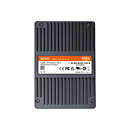
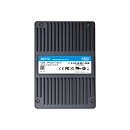
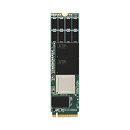
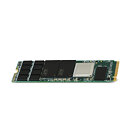
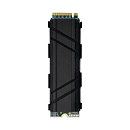
176-Layer NAND Flash, Onboard DRAM Offer Exceptional QoS, Lower Cost per GB with Prime 512 Gbit Die Package
The N601 Series is built on innovative 176-layer 3D NAND flash and uses prime 512 Gbit die package to deliver not only performance improvements over the 64-layer technology, but also price improvements resulting in lower cost per GB.
The M.2 2280 SSDs are available in capacities from 240 GB up to 3.84 TB, while the U.2 SSDs are available from 960 GB to 7.68 TB for more cost-effective options for diverse storage requirements.
With an outstanding Quality of Service (QoS) rating compared with the previous generation, the N601 Series offers optimal consistency and predictability with higher read/write performance, high IOPS, low write amplification index (WAI), and low latency, thanks to its onboard DRAM. The onboard DRAM delivers higher sustained performance over long periods of operation compared with DRAM-less solutions.
Future-Ready, Long-Term Supply Support
Maximizing SSD lifespan, as well as the availability of replacement units long after similar consumer-grade counterparts have stopped production, is important for business to get the most out of their investments. This is why ATP Electronics is committed to longevity support.
"We are thrilled to introduce this new product line based on 176-layer triple level cell (TLC) NAND flash. While there are newer iterations of NAND being released in 2XX+layers, these will focus on 1 Tbit and larger density sizes. The 176-layer 3D TLC NAND in 512 Gbit density remains the sweet spot die density for many embedded and specialty applications given their ongoing need for mid and lower SSD device densities.
"Besides a competitive price position, this generation will offer latency improvements and reliability improvements at all temperature ranges. Perhaps even more important to our customer base, this generation will offer product longevity for the foreseeable future. We can work in confidence with our customer base often needing product longevity planning 5 plus years," said Jeff Hsieh, ATP Electronics President and Chief Executive Officer.
Reliable and Secure Operation
Depending on project support and customer request, ATP can provide hardware/firmware customization, thermal solutions customization, and engineering joint validation and collaboration.
To ensure design reliability for mission-critical applications, ATP performs extensive testing, comprehensive design/product characterization and specifications validation, and customized testing in mass production (MP) stage, such as burn-in, power cycling, specific testing scripts, and more.
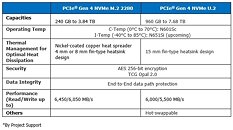
For more information, visit the product pages of the N601/N651 Series PCIe Gen 4 x4 M.2, and N601/N651 Series PCIe Gen 4 x4 U.2.
View at TechPowerUp Main Site
Using x4 lanes, these SSDs have a maximum bandwidth of 8 GB/s, meeting the growing need for high-speed data transfer in today's demanding applications and making them suitable for both read/write-intensive, mission-critical industrial applications such as networking/server, 5G, data logging, surveillance, and imaging, with performance on par, if not better, than mainstream PCIe Gen 4 consumer SSDs in the market.





176-Layer NAND Flash, Onboard DRAM Offer Exceptional QoS, Lower Cost per GB with Prime 512 Gbit Die Package
The N601 Series is built on innovative 176-layer 3D NAND flash and uses prime 512 Gbit die package to deliver not only performance improvements over the 64-layer technology, but also price improvements resulting in lower cost per GB.
The M.2 2280 SSDs are available in capacities from 240 GB up to 3.84 TB, while the U.2 SSDs are available from 960 GB to 7.68 TB for more cost-effective options for diverse storage requirements.
With an outstanding Quality of Service (QoS) rating compared with the previous generation, the N601 Series offers optimal consistency and predictability with higher read/write performance, high IOPS, low write amplification index (WAI), and low latency, thanks to its onboard DRAM. The onboard DRAM delivers higher sustained performance over long periods of operation compared with DRAM-less solutions.
Future-Ready, Long-Term Supply Support
Maximizing SSD lifespan, as well as the availability of replacement units long after similar consumer-grade counterparts have stopped production, is important for business to get the most out of their investments. This is why ATP Electronics is committed to longevity support.
"We are thrilled to introduce this new product line based on 176-layer triple level cell (TLC) NAND flash. While there are newer iterations of NAND being released in 2XX+layers, these will focus on 1 Tbit and larger density sizes. The 176-layer 3D TLC NAND in 512 Gbit density remains the sweet spot die density for many embedded and specialty applications given their ongoing need for mid and lower SSD device densities.
"Besides a competitive price position, this generation will offer latency improvements and reliability improvements at all temperature ranges. Perhaps even more important to our customer base, this generation will offer product longevity for the foreseeable future. We can work in confidence with our customer base often needing product longevity planning 5 plus years," said Jeff Hsieh, ATP Electronics President and Chief Executive Officer.
Reliable and Secure Operation
- The N601 Series offers a host of reliability, security, and data integrity features, such as:
- End-to-end data protection, TRIM function support, and LDPC error correction
- Anti-sulfur resistors repel the damaging effects of sulfur contamination, guaranteeing continued dependable operation even in environments with high sulfur content
- Hardware-based AES 256-bit encryption and optional TCG Opal 2.0/ IEEE 1667 security for self-encrypting drive (SED)
- N601Sc Series offers reliable operation in varying temperature shifts with C-Temp (0℃ to 70℃) rating. I-Temp operable (-40℃ to 85℃) N651Si Series will be available for later release.
- Thermal throttling intelligently adjusts the workload per operating unit time. Throttling stages are pre-configured, allowing the controller to effectively manage heat generation to keep the SSD cool. This ensures stable sustained performance and prevents the heat from damaging the device. Heatsink options are available by project and according to customer request.
- Power loss protection (PLP) Mechanism. The N601 Series U.2 and upcoming I-Temp rated M.2 2280 SSDs feature hardware-based PLP. Onboard capacitors hold up power long enough to ensure that the last read/write/erase command is completed, and data is stored safely in the non-volatile flash memory. The microcontroller unit (MCU)-based design allows the PLP array to perform intelligently in various temperatures, power glitches, and charge states to protect both device and data. C-Temp rated M.2 2280 SSDs, on the other hand, feature a firmware-based PLP, which effectively protects data that had been written to the device prior to power loss.
Depending on project support and customer request, ATP can provide hardware/firmware customization, thermal solutions customization, and engineering joint validation and collaboration.
To ensure design reliability for mission-critical applications, ATP performs extensive testing, comprehensive design/product characterization and specifications validation, and customized testing in mass production (MP) stage, such as burn-in, power cycling, specific testing scripts, and more.

For more information, visit the product pages of the N601/N651 Series PCIe Gen 4 x4 M.2, and N601/N651 Series PCIe Gen 4 x4 U.2.
View at TechPowerUp Main Site


